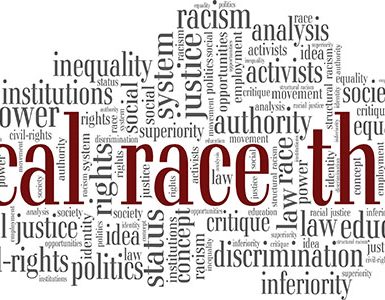It does not take much to see the surface-level differences between the administration of Donald Trump and the still-young administration of President Joe Biden. The Tweeting, fearmongering, propagandizing, and conspiracy inciting of the Trump presidency simply cannot be confused for anything other than what it is. One will not forget which president wrote “When the looting starts, the shooting starts,” or “Despite the constant negative press covfefe.”
One area where we are already seeing the contrast between the administrations is the use of executive orders. President Biden has already signed over twenty into law. This should not surprise anyone—one would not expect the executive orders of Donald Trump and a Democratic president, even one that does not venture far from the center, to resemble each other in any way. Biden has already used the orders to expand Obamacare and reverse anti-abortion policy. Two moves that surely haunt the dreams of Tea Party members.
A series of four executive orders signed last Tuesday also widen the chasm between the administrations’ ideologies, but bring them somewhat closer together through an apparent penchant for inconsistency and vagueness. At a glance, the four orders help cast the new administration in a relatively progressive light. They were aimed at condemning increased racism and xenophobia toward Asian-Americans and Pacific Islanders during the coronavirus pandemic. Dissuading discriminatory housing practices that have historically harmed African Americans Upholding previous commitments to regularly consult with Native American leaders, and, perhaps most strikingly, ending the nation’s use of private prisons.
This all sounds nice in theory. If we do not look any further into the orders, one may become convinced that President Biden and his cabinet have professed that they are committed to ending the pernicious legacies of racism and mass incarceration. In the “Memorandum Condemning and Combating Racism, Xenophobia, and Intolerance Against Asian Americans and Pacific Islanders in the United States,” it is written that the “Federal Government has a responsibility to prevent racism, xenophobia, and intolerance against everyone in America, including Asian Americans and Pacific Islanders. My Administration condemns and denounces acts of racism, xenophobia, and intolerance against AAPI communities.” I will spoil the ending for you: there is nothing concrete in this “memorandum” explaining how his administration plans to “condemn” and “denounce” such acts. It is essentially toothless, as executive orders often are.
The order itself is presented as some major and unadulterated denunciation of bigotry against Asian-Americans and Pacific Islanders but cannot even take itself seriously enough to use definitive language. For example, and I will italicize the key noncommittal words, the order dictates that federal agencies “may consult with public health experts, AAPI community leaders, or AAPI community-serving organizations…to ensure an understanding of the needs and challenges faced by AAPI communities,” and that the Secretary of Health and Human Services shall “consider issuing guidance describing best practices for advancing cultural competency, language access, and sensitivity towards Asian Americans and Pacific Islanders….”
It is true that executive orders do not necessarily function as hard and unquestionable law, but they can certainly be more assertive than this. This “order” reads as a series of timid, halfway suggestions rather than an elaborate and concerted effort toward ending unwarranted bigotry. Just compare the lukewarmness of those excerpts to the language in the “Memorandum on Tribal Consultation and Strengthening Nation-to-Nation Relationships” that outlined future regulations concerning the consulting of Native American leaders. Not only is this order assertive, but it makes reference to two previous orders that were also more assertive than the other three orders President Biden signed on Tuesday, leading one to believe that he must know precisely what executive orders are capable of.
This order is noticeably lacking noncommittal language, which is already made obvious in subsection (a) of the very first section (note the italics): “The head of each agency shall submit to the Director of the Office of Management and Budget…a detailed plan of actions the agency will take to implement the policies and directives of Executive Order 13175. The plan shall be developed after consultation by the agency with Tribal Nations and Tribal officials….”
There are no two ways about how to construe this messaging. The following sections continue in a similar register. Subsection (b) dictates that “Each agency’s plan and subsequent reports shall designate an appropriate agency official to coordinate implementation of the plan and preparation of progress reports required by this memorandum.” Subsection (c) goes so far as to create a requirement so bold that its active period has no definable end date: “The head of each agency shall submit to the Director of OMB, within 270 days of the date of this memorandum, and annually thereafter, a progress report on the status of each action included in the agency’s plan, together with any proposed updates to its plan.”
Yet, when it comes to the order concerning housing discrimination, the best we can get is a flimsy pledge that “it is the policy of my Administration that the Federal Government shall work with communities to end housing discrimination, to provide redress to those who have experienced housing discrimination, to eliminate racial bias and other forms of discrimination in all stages of home-buying and renting, to lift barriers that restrict housing and neighborhood choice, to promote diverse and inclusive communities, to ensure sufficient physically accessible housing, and to secure equal access to housing opportunity for all.” The most alarming part of this politicking is the idea of providing “redress” to victims of housing discrimination. The order makes no mention of how a task that enormous could possibly be completed, and it says little of how the President intends to achieve the others as well.
Upon examining the progressive sheen atop these mostly insubstantial directives, one may conclude that the President’s heart is in the right place. Actions, however, are what help people. For all any of us know, the Biden administration may go on to permanently end housing discrimination, mass incarceration, unnecessary privatization, and knock out racism on its victory lap. This could be the wobbly prelude to the four to eight years in which we finally fix America. But it most certainly will not be if the President’s policies prove to be as halfhearted as his language.


















Add comment